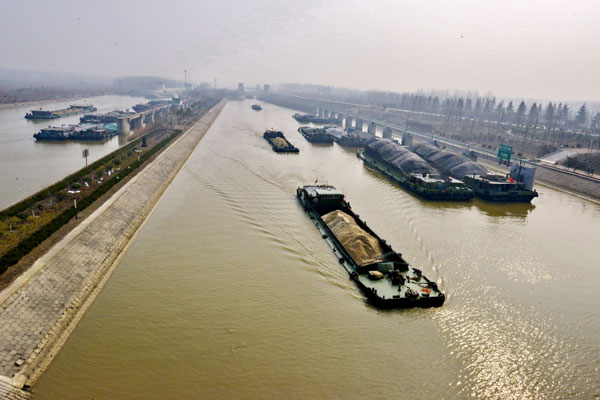Wicker artists find success after hardship
 |
|
Barges pass the Zaozhuang section of the Grand Canal. |
"Tai'erzhuang became prosperous overnight because of the Grand Canal," Zaozhuang's Party chief Chen Wei says.
The Jia Canal is colloquially known as the "canal of pound locks" because eight locks control water levels.
Tai'erzhuang had the first pound lock barges pass through when the water enters Shandong from Jiangsu province.
"In ancient times, passing through a lock took at least two weeks and sometimes up to two months. So merchants had to stay in Tai'erzhuang, which boosted the town's economy," Zaozhuang's Grand Canal culture promotion office expert Dong Yunqi says.
The Annals of Yi County records that more than 10,000 barges passed through Tai'erzhuang a year, making the town an important transport base during the Ming and Qing (1644-1911) dynasties.
Tai'erzhuang's permanent population then reached 60,000, and about 150,000 others passed through every year, Dong says.
These people left great legacies - both tangible and intangible.
The town once had about 6,000 buildings constructed in eight architectural styles and 72 temples for major world religions, such as Catholicism, Islam, Protestantism and Buddhism, Dong says.
But the ancient town of Tai'erzhuang was mostly destroyed during World War II. The local government began rebuilding in 2006 to lure tourists. It has worked to make the new Tai'erzhuang as close to the old one as possible.
"Tai'erzhuang enjoys great fortune bestowed by the Grand Canal," Chen says.
The rebuilt town is a 5-A site - the top national tourism designation.















